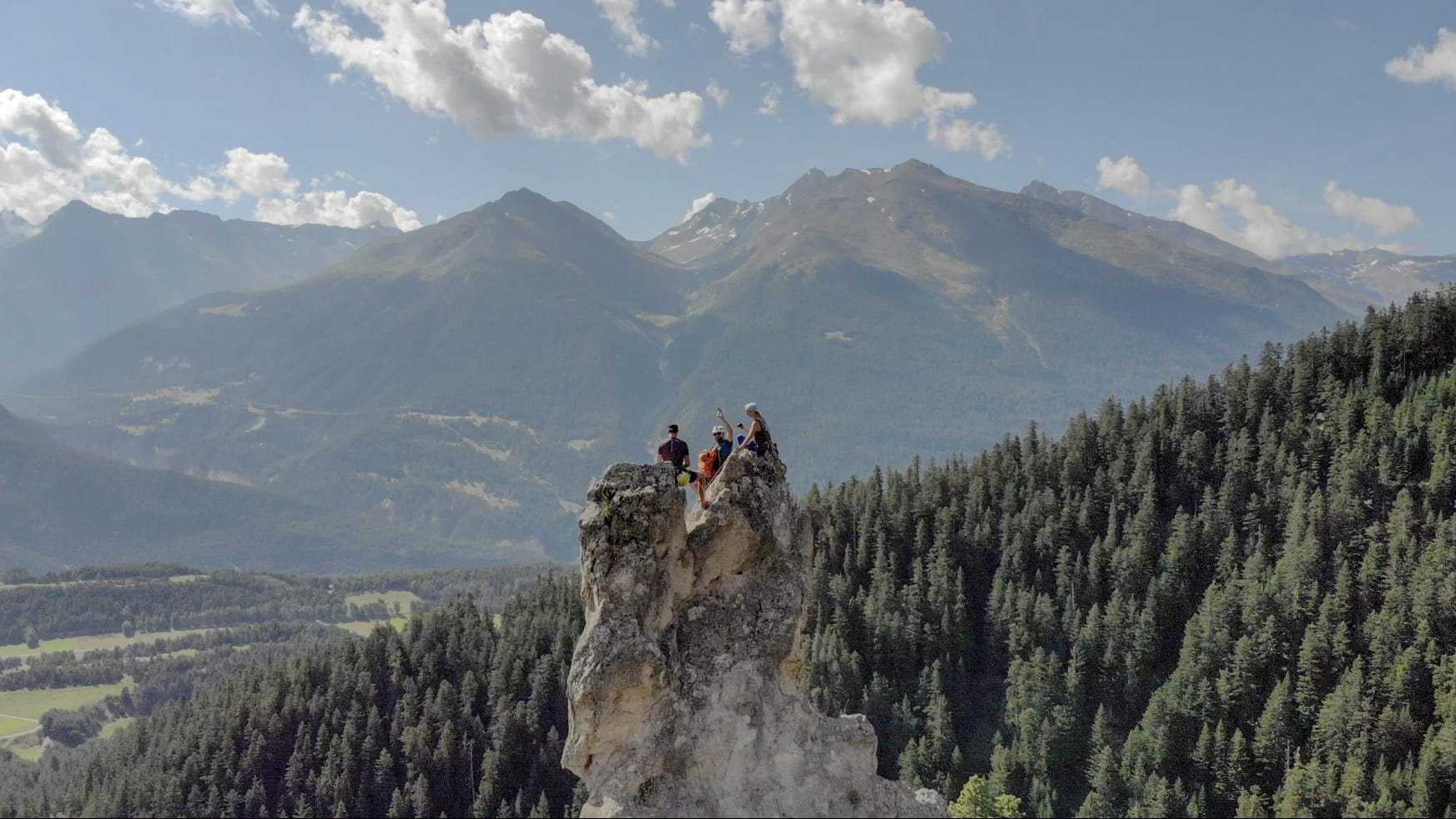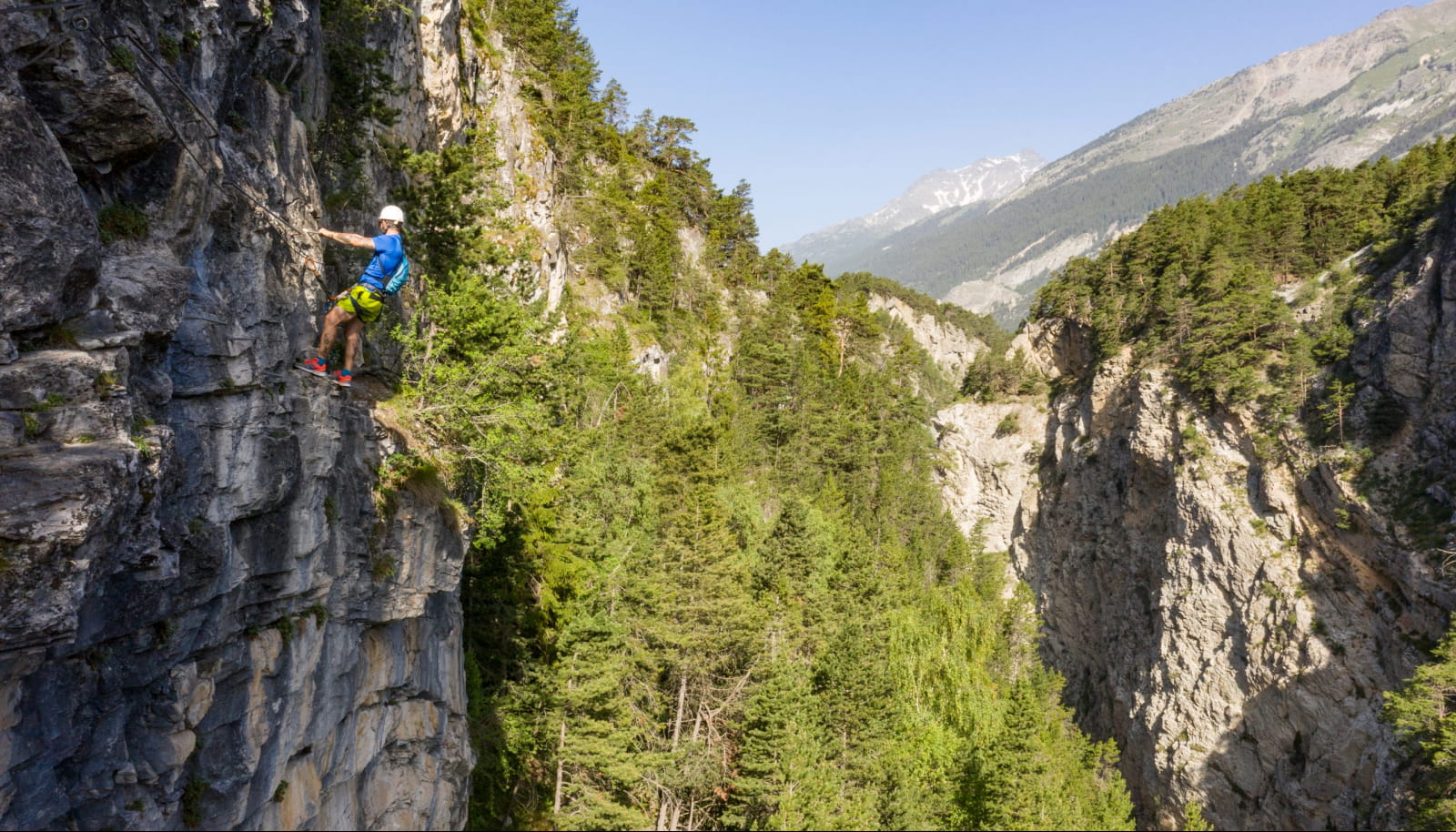- Outdoor
Via ferratas, walls, climbing routes: three ways to rise up

But, above all, what gives climbing its meaning and importance is the human experience and, with this, the confidence we gain when we learn to walk in step with others. Known as the esprit de cordée in French, it's the noblest way to rise up
TAMING VERTICALITY
To begin, you can choose from one of the many via ferratas. A cross between hiking and climbing, horizontality and verticality, these paths along rock cliffs have lines, metal steps, walkways, and rope bridges to help you learn and progress easily. With varying heights and difficulties, they help you improve safely under the supervision of trained professionals and provide pleasure from the surrounding exceptional viewpoints.
Via ferrata, between hiking and climbing
BECOME ONE WITH THE ROCK
Another way to scale is at one of the climbing wall sites installed in the Savoie or Haute-Savoie. These recreational walls propose several levels of difficulty. When under the supervision of experienced guides and monitors, you can learn and practise single-person climbing techniques up to three metres high. Any possible falls happen on flat ground and crash pads. One class is usually enough to learn the basics and to climb the first metres. With practice and help from your reflexes, you'll soon stir the climber deep inside you.
FINDING YOUR PATH
For those who would like to go further, climbing routes are just for you. Generally rated from levels 3 to 9 and from a few dozen to a few hundred metres long, climbing routes allow everyone—from beginners to the more experienced—to do what they love the way they want. Reserved for experts, aid climbing consists of creating your own fixed points on the rock by placing protection in the cracks and clipping the rope, called an aider, to it.

THE RIGHT GEAR
Has the idea of climbing taken hold?
You'll need the right equipment to practise any one of the activities listed.
- Climbing shoes Shoes are the most important element of your gear as they ensure sensitivity in your feet and their adherence to the wall. They must be flexible and comfortable and have a sole that is thin enough to feel the various surfaces under your feet but thick enough not to cause pain.
- Climbing helmet Choose a helmet that is resistant and durable to protect your head from falling rocks, although it must also be light and breathable to avoid discomfort and hot spells.
- Climbing harness For optimum freedom of movement, an adjustable harness is the best.
- Chalk bag The bag should be in reach to easily chalk your hands for better grip. Opt for a chalk bag that can attach to your harness.

